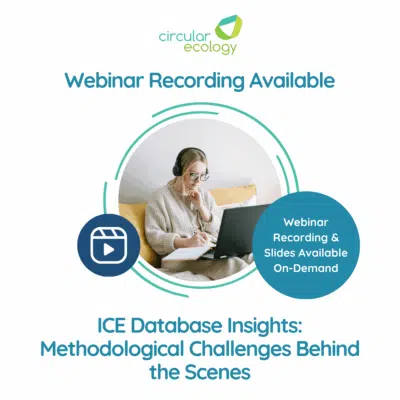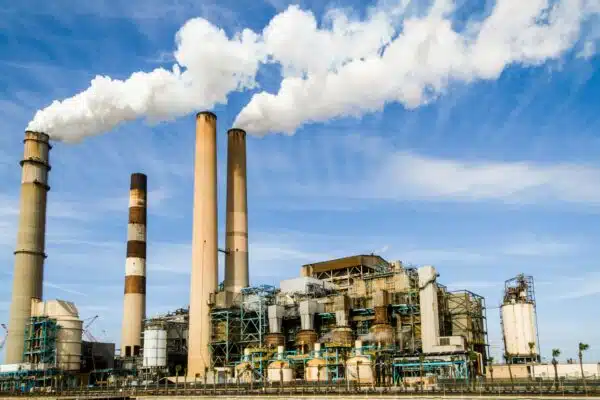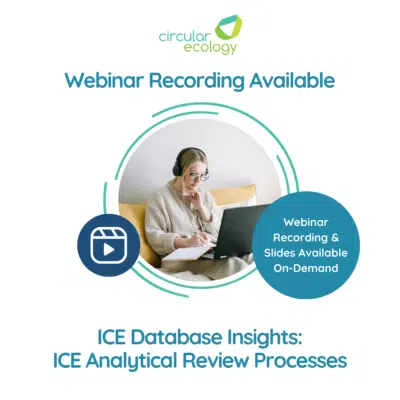EN 15804+A2 Update and What it Means for EPDs

EN 15804 is considered the most popular global standard for producing environmental product declarations (EPD) for construction products. It provides core product category rules (PCR) for assessing construction products directly, or may be used for developing even more detailed PCR for specific product categories.
Fundamentally, EN 15804 defines how data for EPDs is collected, reported, verified, and presented, and also includes rules for Life Cycle Impact Assessment (LCA) and Inventories (LCI).
In 2019 the standard was updated to ‘EN 15804:2012+A2:2019’, which introduced a number of significant changes. By 2022, the update will be mandatory for all EN 15804 EPD.
This article will give an overview of the biggest changes to the standard compared to its previous version including:
- Changes to impact categories, including new categories
- New requirements for biogenic carbon and storage
- Mandatory reporting of end of life (stage C) and benefits and loads beyond the life cycle (module D)
- Changes to the way module D is calculated
- Data must be available in International Reference Life Cycle Data System (ILCD) format
Life Cycle Stages and Modules
The environmental impact of a product is divided into stages called life cycle modules, starting with resource extraction (the cradle) and ending with disposal (grave), and then recovery potential. EPDs are commonly divided into the following three categories:
Cradle to Gate
- Modules A1-A3 (Product stage)
Cradle to Gate with Options
- Modules A1-A3 + selected end of life modules
Cradle to Grave
- Modules A1-A3, B, C1-C4 (End of life)

Updates to the Modules
Currently, EPDs are only required to provide information for modules A1-A3 (‘cradle to gate’). Compared to the 2012 version of the standard: ‘EN 15804:2012+A1’, the 2019+A2 update requires that EPDs provide mandatory information on the environmental impacts for modules C1-C4 (‘cradle to grave’) and are also required to report module D. The modules cannot be added together.
Reasonable assumption scenarios must be given, which will provide information on what could happen to the product at the end of life. This will allow the whole life and end of life of products and buildings to be assessed in terms of their environmental impact. For example:
- Will the product be reclaimed or recycled?
- Will the product be incinerated or sent to landfill?
- Will the product be partly reclaimed, recycled, incinerated, or sent to landfill?

Environmental Indicators
With the update, Global Warming Potential has been split into 3 impact categories: Climate Change Fossil, Climate Change Biogenic Removal and Emissions, and Climate Change Land Use and Land Use Change. Climate Change Total provides the sum of these impact categories.
Eutrophication has also been split into 3: Eutrophication Aquatic Freshwater, Eutrophication Aquatic Marine, and Eutrophication Terrestrial, to better assess the impact of products on the nitrogen cycle and water systems.
A greater emphasis has been placed on the impact on human health, with the optional impact categories Particulate Matter Emissions, Ionizing Radiation, Human Health, Human Toxicity: Cancer Effects, and Human Toxicity: Non-Cancer Effects being added to the update.
The update also included the addition of optional categories which can also be reported in an EPD. Note that not all impact categories are mentioned in the table below.
EN 15804+A1 |
EN 15804+A2 |
|---|---|
| Global Warming Potential | Climate Change Total |
| Depletion of Stratospheric Ozone | Climate Change Fossil |
| Photochemical Ozone Formation | Climate Change Biogenic Removals and Emissions |
| Acidification | Climate Change Land Use and Land Use Change |
| Eutrophication | Ozone Depletion |
| Abiotic Depletion of Non-Fossil (resources) | Acidification |
| Abiotic Depletion of Fossil (resources) | Eutrophication Aquatic Freshwater |
| Eutrophication Fresh Marine | |
| Eutrophication Terrestrial | |
| Photochemical Ozone Formation | |
| Abiotic Depletion- Minerals and Metals | |
| Fossil Fuels | |
| Water Use | |
| Particulate Matter Emissions | |
| Ionizing Radiation, Human Health | |
| Eco-Toxicity | |
| Human Toxicity, Cancer Effects | |
| Human Toxicity, Non-Cancer Effects | |
| Land Use Related Impacts/Soil Quality |
Biogenic Carbon Tracing
Under the new standard, EPDs are now required to report more information on the biogenic carbon of a product and its packaging.
Biogenic global warming potential is any carbon that comes from a biomass source such as trees and plants (e.g., timber), except native forests. This carbon is stored in the biomass. To measure biogenic carbon for wood and wooden products, the EN16449 standard can be followed. The EN 15804+A2 update requires the whole life of biogenic carbon to be traceable, therefore increasing the understanding of the environmental impacts of a construction product or service, and reducing greenwashing. Any biogenic carbon within biomass which is transferred throughout the lifecycle of a product or building should be reported using ‘land use land use change’ (GWP-LULUC).

Benefits of the 2019+A2 Update
- Information about biogenic carbon at each stage will be clearer, measurable, and traceable.
- The additional environmental indicators will make understanding the environmental impact of a product easier, and the full picture will be given.
- Assumptions on the end of life of products will be improved.
- The data aims to align with product environmental footprints (PEF)
Higher levels of data quality will be provided with the new update, which help those who use EPDs to be better informed at the product and building level about environmentally friendly choices. By understanding the environmental impact of a construction product, companies can be better equipped to make Net Zero Carbon pledges for their building through decarbonisation and offsetting. The information provided in EPDs allows companies to choose lower-carbon products and services, reducing their environmental impact.
More Information
If you would like to learn more about Environmental Product Declarations, the EPD services Circular Ecology can provide, or need assistance carrying out life cycle assessments, please contact us.
Webinar Recap: ICE Insights: Methodological Challenges Behind the Scenes
Circular Ecology hosted the fourth webinar in the ICE Database Insights webinar mini series on [...]
Jun
DESNZ (Defra) 2025 GHG Emissions Factors Released
The UK Department for Energy Security and Net Zero (DESNZ) have just released the 2025 [...]
Jun
Webinar Recap: ICE Insights: Are All EPDs Created Equal?
On Thursday, 22nd May, Circular Ecology hosted the third instalment in the ICE Database Insights [...]
May
Webinar Recap: ICE Insights: ICE Analytical Review Processes
On Wednesday, April 30th, Circular Ecology hosted the second session of our ICE Database Insights [...]
Apr




